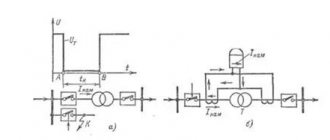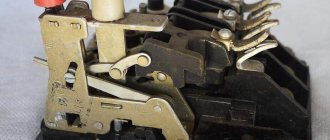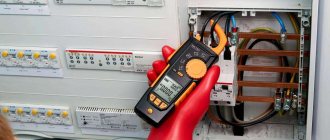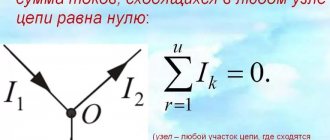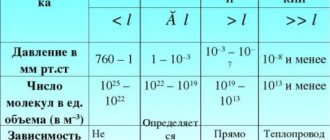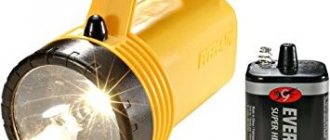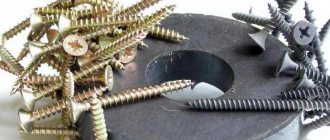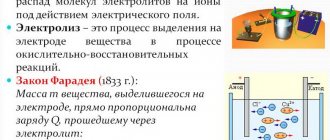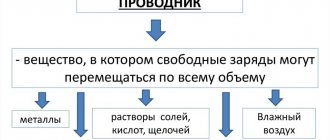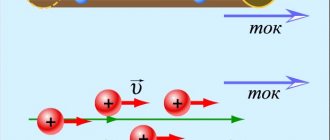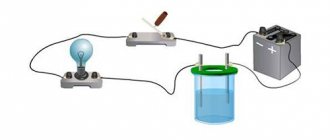Where does the current come from?
It should be noted that electric current can be generated not only in a metal conductor, but also in other substances. For example, atmospheric energy appears in rain clouds, but it is not possible to use it. Coils of copper generator sets are ideal for generating electricity used for household needs.
Electric current in metals is created by the ordered movement of electrons. The term “Electricity” was first introduced by William Gilbert in the 16th century, but the natural scientist limited himself to producing electrical discharges of static electricity. Two centuries later, Michael Faraday had already created a working model of a dynamo , the birth of which was due precisely to the effect of the formation of electricity in metals.
The scientist improved a previously known physical experiment in which a current in metals was created by the movement of a magnetic field around a static metal object. The first generator was a structure consisting of a rotating permanent magnet and a copper coil. Such a machine made it possible to obtain a relatively small voltage in the conductor. At that time, it was not yet known for certain what particles created current in metals. Only in 1913 did scientists manage to prove the electronic nature of this phenomenon.
Experiments to determine the causes of stress in metals were started by Russian scientists L. I. Mandelstam and N. D. Papaleksi. After 3 years, physicists R. Tolman and B. Stewart significantly improved the technique, which made it possible to carry out quantitative measurements.
To obtain accurate results, scientists had to create special machines, thanks to the use of which they were able to determine the cause of the current. If we briefly summarize the essence of the experiments carried out to prove the electronic nature of the appearance of current, we will get a summary of the following content:
- It is necessary to prepare a coil that can rotate around its axis.
- Place the product on a hard surface, such as the floor.
- Connect the output of the conductors of this electrical machine to a galvanometer.
- Spin the coil (the rotation speed should be significant).
- Brake the device sharply.
As a result of the experiment, an electrical impulse arises, which can be recorded by a measuring device. The appearance of voltage in the circuit could only be caused by the presence of charged particles called electrons. These elements are affected, like any solid body, by the force of inertia, which forces them to “come out” of the conductor after the coil suddenly stops.
The nature of current carriers in metals
Current carriers in metals are free electrons (electrons weakly bound to ions of the crystal lattice). This idea is based on the electronic theory of conductivity of metals, as well as on a number of experiments confirming its provisions.
Rikke's Experience
An electric current was passed for a year through three cylinders (copper, aluminum, copper) of the same radius connected in series with carefully polished ends. As a result, no, even microscopic, traces of substance transfer were found: therefore, ions in metals do not participate in the transfer of electricity, and charge transfer in metals is carried out by particles that are common to all metals. Such particles could be electrons discovered by D. Thomson (1897).
Stewart and Tolman experiments
(idea of Mandelstam and Papaleksi)
A coil with a large number of turns, connected to a sensitive galvanometer, was set into rapid rotation around its axis, and then sharply slowed down.
If there are mobile current carriers in the metal, weakly connected to the lattice, then when the conductor is suddenly braked, these particles should move forward by inertia, just as passengers standing in a carriage move forward when it is braked. The result of the displacement of charges should be a current pulse, which is what was observed: by the direction of the current, the sign of the current carriers can be determined, and knowing the dimensions and resistance of the conductor, the specific charge of the carriers can be calculated. It turned out that the values of the specific charge and mass of current carriers and electrons moving in vacuum coincided. Thus, it was finally proven that the carriers of electric current in metals are free electrons.
Metal ions are located at the nodes of the crystal lattice, and free electrons move chaotically between them, forming a kind of electron gas
,
which, according to the electronic theory of metals, has the properties of an ideal gas.
According to the Drude-Lorentz theory, electrons have the same energy of thermal motion as the molecules of a monatomic gas. The average speed of thermal motion of electrons is determined by the formula
m/s (at T=300K).
The thermal motion of electrons, being chaotic, cannot lead to the generation of current. When an external electric field is applied to a metal conductor, in addition to the thermal motion of electrons, their ordered motion occurs, i.e. an electric current occurs. The average speed of ordered electron motion can be estimated using the formula
ϳ
=
ne
at current density ϳ
=107 A/m2 (permissible for copper conductors)
n =
8∙1028 m-3, = 7.8∙10-4 m/s. So, << i.e. even at very high current densities, the average speed of the ordered movement of electrons, which determines the electric current, is significantly less than the speed of their thermal movement. Therefore, in calculations, the resulting speed (+) can be replaced by the speed of thermal motion.
Electromagnetism
Magnetic field and its characteristics
Magnetic field detection
Magnetic field is a force field in the space surrounding currents and permanent magnets.
A magnetic field is detected by the force acting on current-carrying conductors or permanent magnets introduced into it.
A characteristic feature of a magnetic field is that a magnetic field is created only by moving charges and acts only on electric charges moving in this field.
An electric field is created and acts on both stationary and moving charges.
The nature of the influence of the magnetic field on the current depends on the shape of the conductor through which the current flows, on the location of the conductor and on the direction of the current.
To characterize a magnetic field, it is necessary to consider its effect on a certain
current.
To study the magnetic field, a circuit is used whose linear dimensions are small compared to the distance to the currents forming the magnetic field. The orientation of the contour in space is characterized by the direction of the normal to the contour. The direction of the normal is determined by the rule of the right screw : the positive direction of the normal is taken to be the direction of translational movement of the screw, the head of which rotates in the direction of the current flowing in the frame.
The direction of the magnetic field at a given point is taken to be the direction along which the positive normal to the freely suspended frame with current is located, or the direction that coincides with the direction of the force acting on the north pole of the magnetic needle placed at a given point. Consequently, a pair of forces acts on the magnetic needle, turning it so that the axis of the needle, connecting the south pole with the north, coincides with the direction of the field.
Calculation formula
An accurate calculation of the specific charge (em) in metals can be determined using the following formula:
Em=lu0Rq
Where:
- l is the current strength that instantly appears in the conductor when the coil stops;
- u 0 is the initial linear speed of the wire turns;
- R - circuit resistance;
- q is the charge.
The experiments carried out by R. Tolman and B. Stewart made it possible to organize previously obtained information from other scientists. Despite this, electrical conductors have been actively used in electrical products since the beginning of the 19th century , proof of the electronic nature of current in metals has accelerated the emergence of complex devices.
Electric current in conductors
Conductors contain free charge carriers, which, under the influence of an electric field, move and create an electric current.
In metal conductors, charge carriers are free electrons. As the temperature rises, the chaotic thermal movement of atoms interferes with the directional movement of electrons and the resistance of the conductor increases. When cooling and the temperature approaches absolute zero, when thermal movement stops, the resistance of the metal tends to zero.
Electric current in liquids (electrolytes) exists as the directed movement of charged atoms (ions), which are formed in the process of electrolytic dissociation. The ions move towards electrodes opposite in sign and are neutralized, settling on them. — Electrolysis. Anions are positive ions. They move to the negative electrode - the cathode. Cations are negative ions. They move to the positive electrode - the anode. Faraday's laws of electrolysis determine the mass of a substance released on the electrodes. When heated, the resistance of the electrolyte decreases due to an increase in the number of molecules decomposed into ions.
Electric current in gases - plasma. Electric charge is carried by positive or negative ions and free electrons, which are formed under the influence of radiation.
There is an electric current in a vacuum as a flow of electrons from the cathode to the anode. Used in electron beam devices - lamps.
Application of this phenomenon
The message about the experiments quickly became widespread not only in scientific circles. Of course, it was impossible to call such a phenomenon the discovery of the century, but when calculating the circuits of high-precision devices, it was no longer possible to do without taking into account the behavior of electrons.
Thanks to the movement of electrons in metals, batteries can be charged. The construction of power lines is also carried out taking into account the movement of electrons in metals. In general, almost any electrical devices operate on conductors in which the presence of this phenomenon is mandatory.
The experience of Mandelstam and Papaleksi
The electronic nature of current in metal was first experimentally proven by Russian physicists Mandelstam and Papaleksi in 1913. In order to find out which particles create electric current in metals, they - without connecting an external source - recorded the current in a coil of metal wire, which was first strongly spun around its own axis, and then abruptly stopped. Since the electron has mass, it must obey the law of inertia. Therefore, at the moment of stopping, the lattice atoms will remain in place, and free electrons, by inertia, will continue to move in the same direction for some time. That is, an electric current must appear in the circuit. Experiments confirmed this assumption - after the coil stopped, the researchers recorded an inrush of current in the circuit.
Rice. 2. The experience of Mandelstam and Papaleksi.
This experiment was repeated in 1916 by the Americans Stewart and Tolman. They managed to increase the accuracy of measurements and obtain the ratio of the electron charge ee to the value of the electron mass me:
$$ {e_e over m_e } = 1.8*10^{11} C/kg $$
This fundamental result coincided with data obtained from other experiments based on measurements of other parameters. This value was first measured in 1897 by the Englishman Joseph Thomson from the deflection of an electron beam depending on the electric field strength.
